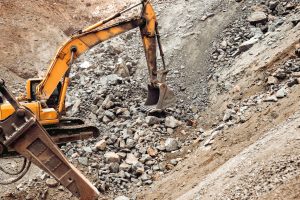Maintaining public infrastructure like roads, bridges, and underground utilities is vital for our daily lives. Traditional digging methods can cause a lot of disruption and damage. This is where non-destructive digging (NDD) comes in handy. NDD is a special technique that helps us dig safely without harming important underground pipes and cables.
In our modern world, keeping everything running smoothly is important. Non-destructive digging makes it possible for us to fix and maintain our infrastructure with less hassle. This technique uses advanced tools and vacuum trucks to dig carefully, avoiding any unnecessary damage. As a result, we save time and money while keeping everything in good shape.
Imagine the city streets without constant roadworks causing traffic jams. Non-destructive digging helps us achieve this by allowing quicker and safer repairs. By using these advanced methods, we make sure our public spaces stay functional and safe for everyone.
Now, let’s explore how non-destructive digging works and why it’s a game-changer for public infrastructure maintenance.
Understanding Non-Destructive Digging (NDD)
Non-destructive digging (NDD) is a special way of excavating that avoids damaging underground utilities like pipes and cables. It uses advanced technology and powerful vacuum trucks to safely remove soil without causing harm. The process is simple but very effective. We use high-pressure air or water to break up the soil, and a vacuum then sucks up the loose material. This way, we can see and work around any underground utilities without scratching or breaking them.
One of the biggest benefits of NDD is its accuracy. Our Class A pump system helps us dig precisely, which reduces the risk of hitting utility lines. This precision is crucial in areas with dense underground networks. Traditional excavation methods can often lead to accidents and damage, causing delays and extra costs. With NDD, we can avoid these issues and complete our projects smoothly.
Moreover, NDD is highly efficient. With the ability to dig at a rate of 5600 Bar litres per minute, projects move faster. This means fewer interruptions and quicker completion times. Unlike traditional methods, which may require heavy machinery and manual labour, NDD minimises the need for such resources. This efficiency translates to less noise, less disruption, and a cleaner work environment. By using NDD, we can get our jobs done quicker and with less mess.
How NDD Improves Public Infrastructure Maintenance
Maintaining public infrastructure like roads, bridges, and sewers is crucial for our communities. NDD plays a big role in making this maintenance easier and more efficient. Traditional digging methods can cause a lot of disruption and potential damage, leading to longer repair times. With NDD, we dig with care and precision, ensuring that we don’t harm any existing utilities. This careful approach means repairs and maintenance can be done faster and with less hassle.
Another way NDD helps is by making it easier to inspect and repair underground utilities. When we need to check or fix pipes, cables, or other buried systems, NDD allows us to expose these utilities without damaging them. This makes it much simpler to do our work and ensures that all repairs are done correctly. Having the ability to access these utilities safely means we can keep everything running smoothly and fix problems before they become bigger issues.
Also, using NDD reduces the impact on the surrounding environment. Traditional excavation can lead to soil erosion, water pollution, and other environmental problems. NDD’s careful and precise digging helps keep the soil intact and prevents unwanted damage. This makes it a more sustainable choice for public infrastructure maintenance. By choosing NDD, we help protect our environment while ensuring our public services remain reliable and efficient.
Key Benefits of NDD for Public Infrastructure Projects
Using non-destructive digging (NDD) for public infrastructure projects brings many advantages. First, it offers precise digging. This accuracy means we can avoid damaging important underground utilities such as water pipes, gas lines, and electrical cables. With the advanced technology used in NDD, we are able to pinpoint the exact location of these utilities, ensuring that we excavate around them safely. This precision reduces the risk of costly repairs and downtime, making it an ideal choice for maintaining public infrastructure efficiently.
Next, NDD is highly efficient. Traditional digging methods can be slow and labour-intensive. In contrast, NDD uses powerful vacuum trucks that can dig at a remarkable rate of 5600 Bar litres per minute. This speed allows us to complete projects much quicker, saving both time and money. Faster projects mean less disruption to public services and a quicker return to normalcy for the community.
Another significant benefit is the versatility of NDD. It is suitable for various applications, whether it’s residential apartment complexes or large-scale civil construction projects. The method’s adaptability means we can use it for a wide range of tasks, from simple repairs to complex installations. Additionally, safety interlocks and enhanced protocols protect both the operators and the site, ensuring a safe working environment. This makes NDD not only versatile but also a reliable and safe option for different types of public infrastructure projects.
Future of Non-Destructive Digging in Public Infrastructure Maintenance
Looking ahead, the future of non-destructive digging (NDD) in public infrastructure maintenance appears promising. As technology continues to advance, we can expect even greater improvements in the tools and techniques used in NDD. These advancements will likely lead to further increases in precision and efficiency, making NDD an even more attractive choice for maintaining public infrastructure.
One exciting trend is the integration of NDD with advanced mapping and scanning technologies. By combining these methods, we can create detailed underground maps that guide our digging process. This makes it even easier to avoid damaging utilities and improves overall project planning. Imagine having a clear and accurate picture of what lies beneath the surface before we start digging. This will help us work smarter and more safely.
Sustainability is another important factor driving the future of NDD. As environmental concerns become more pressing, the need for eco-friendly methods increases. NDD’s minimal impact on the environment makes it an excellent choice for projects that aim to be sustainable. As regulations around environmental impact become stricter, the demand for non-destructive digging is likely to grow, encouraging further innovation and adoption of these methods.
Conclusion
Non-destructive digging (NDD) is vital for maintaining and improving public infrastructure. It offers precise, efficient, and safe solutions for accessing underground utilities. By using advanced technology and vacuum trucks, we can complete projects faster and with less disruption. NDD is also versatile, making it suitable for a wide range of tasks. As we look to the future, the integration of new technologies and a focus on sustainability will continue to enhance the benefits of NDD.
If you need reliable and safe digging services for your public infrastructure projects, choose iVac WA. Our advanced equipment and skilled team ensure that your projects are completed with the highest standards of precision and efficiency. Contact iVac WA today to learn more about how we can help you with your digging needs with our non-destructive digging services.

